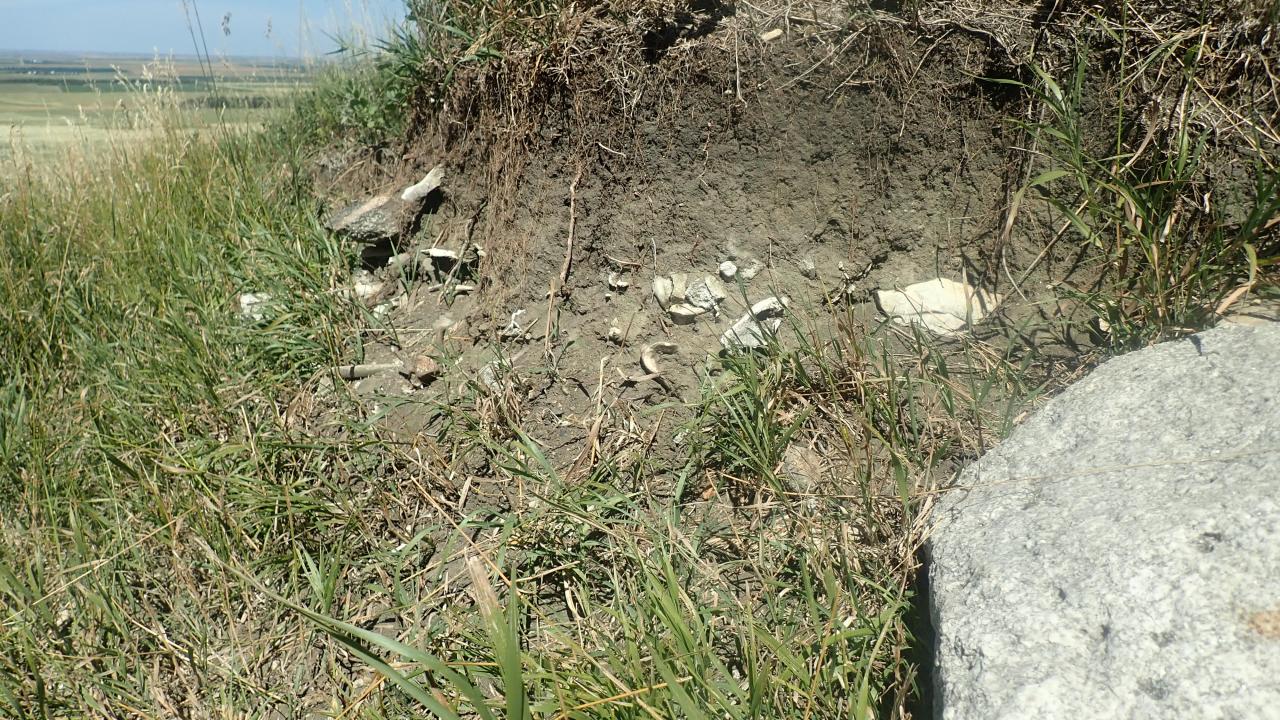In high school, Laura Johnson ‘23 searched for a higher learning opportunity that placed an emphasis on archaeology — the Cannon Falls, Minnesota, native found what she was looking for at a college fair in the Twin Cities. That opportunity turned out to be Augustana University.
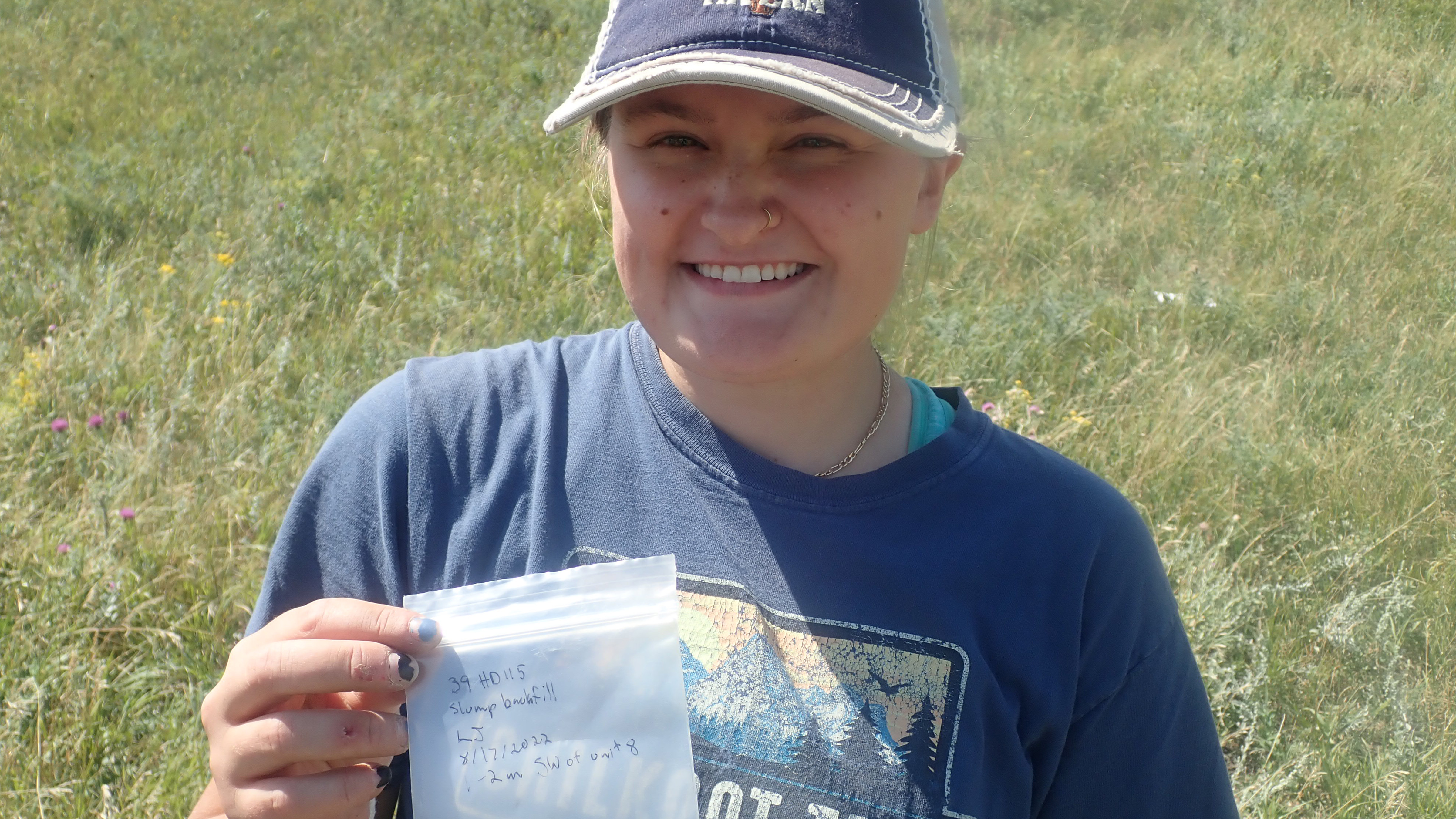 Studying anthropology and journalism at Augustana has taken her to Exeter, England; the Southwest in Arizona; Mitchell, South Dakota; Lynch, Nebraska for field school and most recently, the Fawcett (bison) Kill Site in Ree Heights, South Dakota — a site which faculty, staff and friends of AU are trying to get nominated to the National Register of Historic Places on behalf of the South Dakota State Historic Preservation Office.
Studying anthropology and journalism at Augustana has taken her to Exeter, England; the Southwest in Arizona; Mitchell, South Dakota; Lynch, Nebraska for field school and most recently, the Fawcett (bison) Kill Site in Ree Heights, South Dakota — a site which faculty, staff and friends of AU are trying to get nominated to the National Register of Historic Places on behalf of the South Dakota State Historic Preservation Office.
“I’d never really been exposed to so many (bison bones) scattered in one area. That was really incredible to see,” said Johnson. “I know quite a few students who would never have thought they could have done that. I am one of the lucky ones where I’m able to go out into the field I want to work in.”
In mid-August, Johnson was one of a few students who accompanied volunteers from the South Dakota Historical Society and staff from Augustana’s Archaeology Lab in Western Hand County to conduct a field investigation of the prehistoric bison kill site that was first discovered in 2015, and revisited in 2017 by several universities in South Dakota and historical Society.
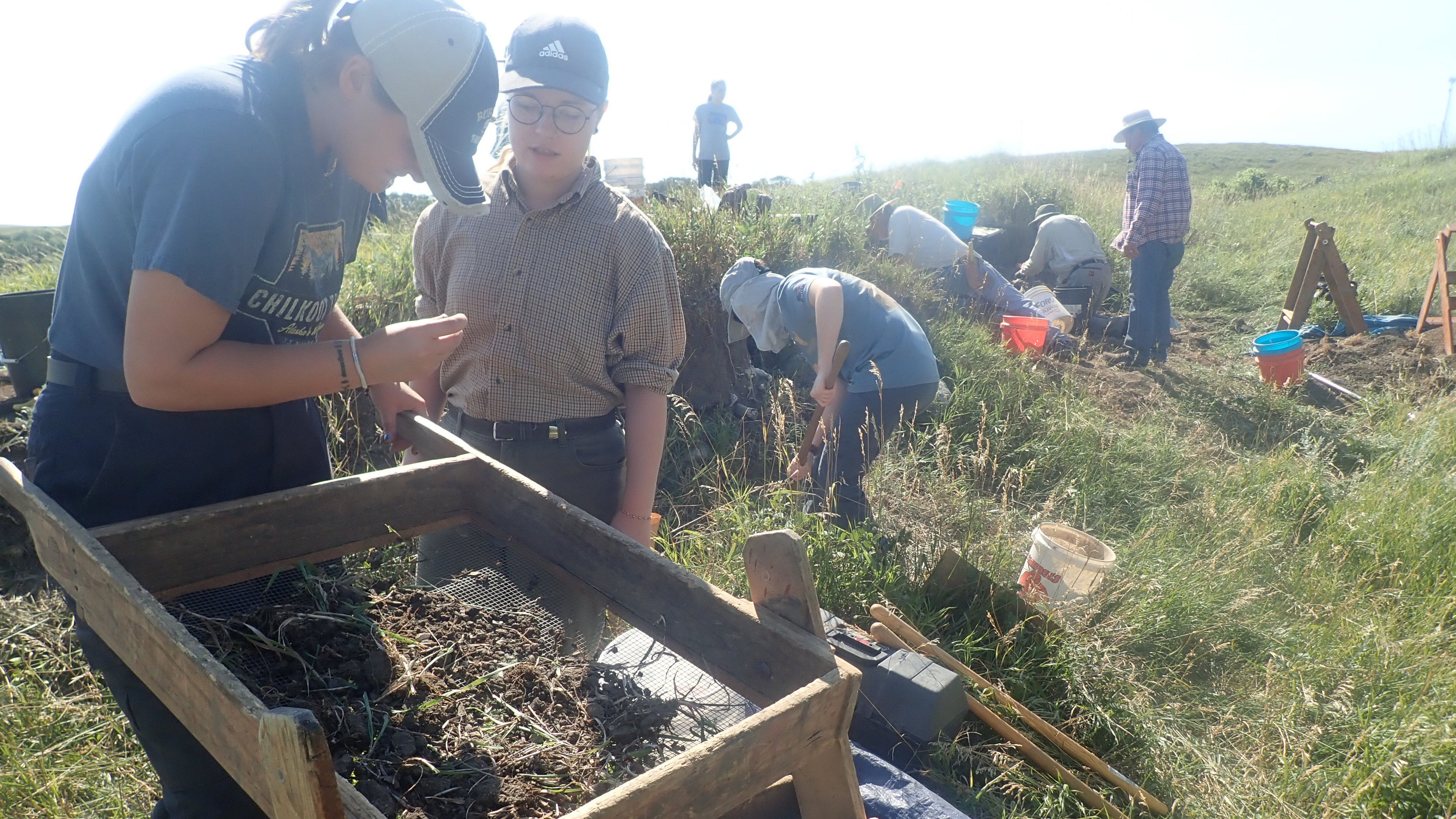 “They’re a little overwhelmed,” said Michael Fosha when asked about the typical reactions of the students when they’re doing fieldwork on a site like this. “The very first bison kill I worked on, a long time ago, there was so much bone and it (the process) was so slow that I had to take a shovel and go out in the middle of the prairie just to dig a hole because I wanted to see dirt move. That’s kind of what it’s like. So, until you can get into that slower process, it’s tough. But they (the students) found bone, they found arrowheads and things like that, so they were thrilled.”
“They’re a little overwhelmed,” said Michael Fosha when asked about the typical reactions of the students when they’re doing fieldwork on a site like this. “The very first bison kill I worked on, a long time ago, there was so much bone and it (the process) was so slow that I had to take a shovel and go out in the middle of the prairie just to dig a hole because I wanted to see dirt move. That’s kind of what it’s like. So, until you can get into that slower process, it’s tough. But they (the students) found bone, they found arrowheads and things like that, so they were thrilled.”
Fosha, former assistant state archaeologist and instructor at Black Hills State University, first saw the Fawcett Kill Site in the news in 2014, which is when he contacted the owners.
“The people who manage the site for their mom are very concerned about protecting it, which is great. So, I made the initial call to him and said, ‘I don’t know what you want to do here, but what I’d like to do is come out, tell you what you have, how to protect it and what’s going to happen to it in the next few years, so to speak. And, they said, ‘Absolutely, please come out.’”
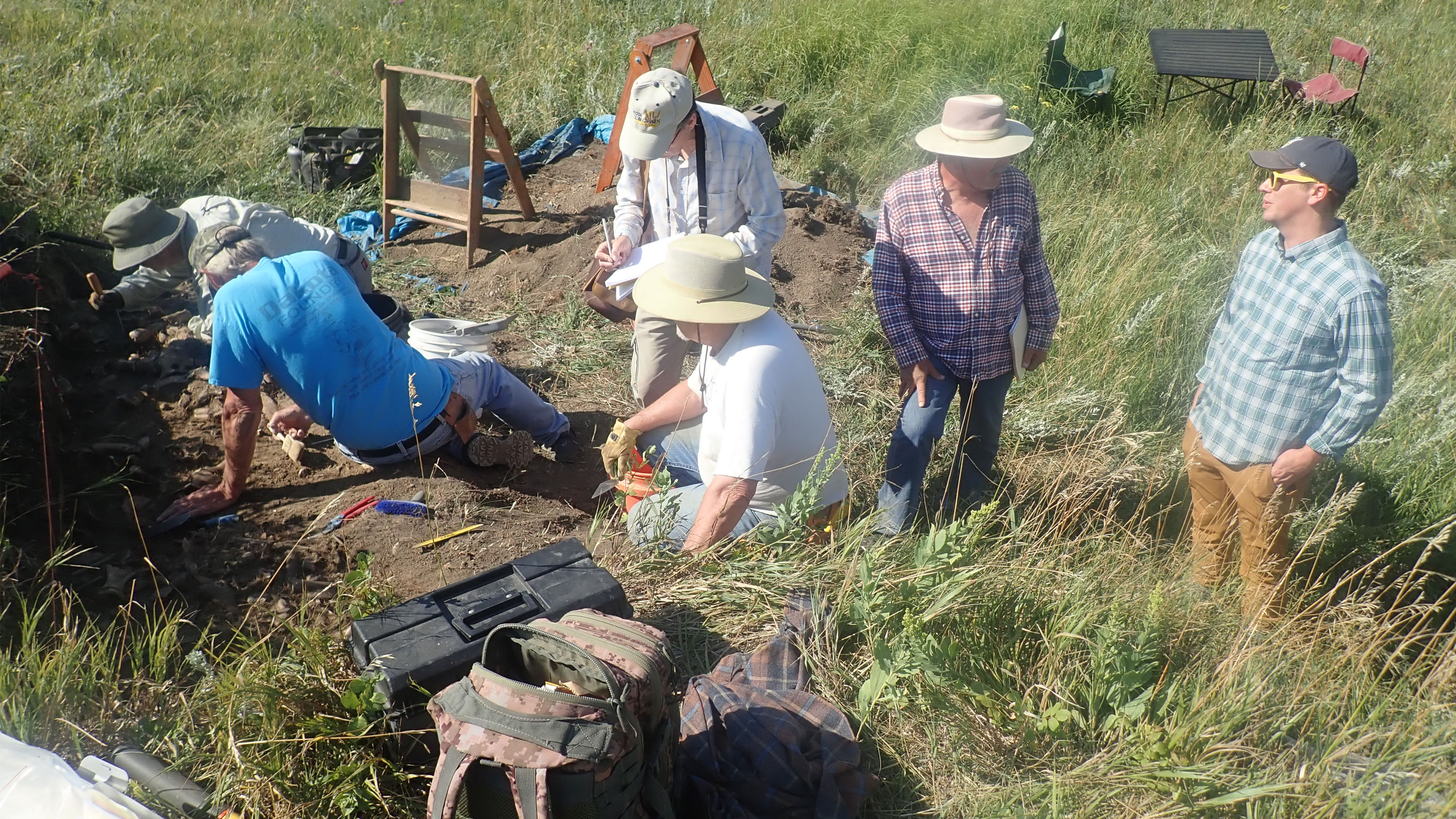 Fosha said that working with people who care about the land that much and its cultural history is unique in itself.
Fosha said that working with people who care about the land that much and its cultural history is unique in itself.
What he and others have found over the past seven years, is that the site dates back to 1200 AD to the initial middle Missouri period, similar to that of the Mitchell Prehistoric Indian Village.
“This population was utilizing this area for bison kills and the reason was it had been a very nice long wet season or cooling period. It wasn’t cold, but it was cooler than normal, longer growing seasons and a lot more moisture. And, that got these acting faults to start sliding, and they were using these (faults) to kill bison. That kind of climate change sort of subsided and it wasn’t until the 1820s or 1830s that started the movement (hillslope soil).”
Fosha said what’s really interesting is fur trade letters from the Fort Pierre area during the fur trade period indicate that the Ree Heights area is where the majority of their bison robes came from. So, for the last 1,000 years, it’s been an area of “intense bison predation.”
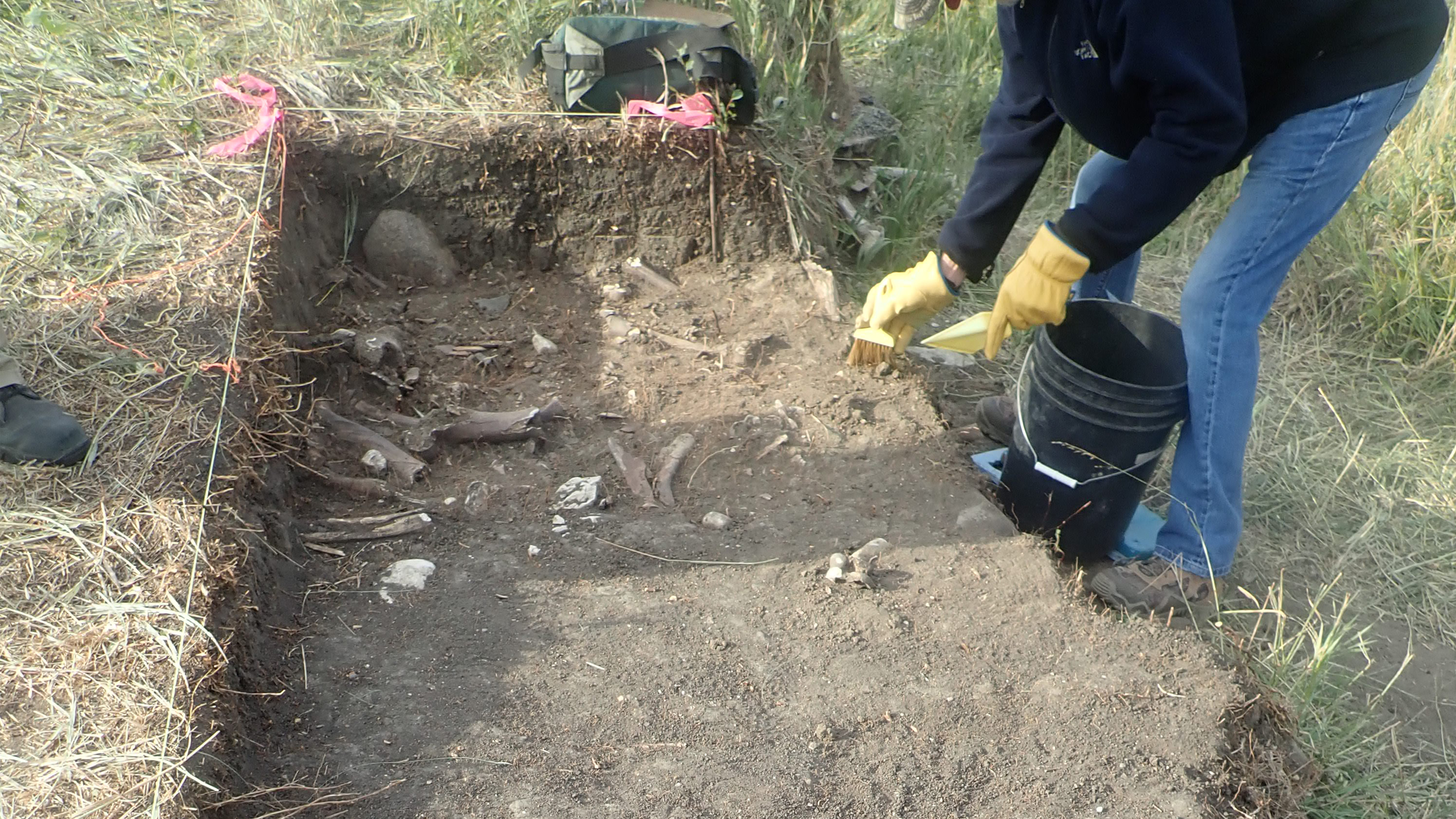 “One of the things we did was look for drive lines. Was this a kill event where they (the people) drove the bison over the top of the cliff or an event where we had this arroyo or gully and they drove them up from below and into there? I’m convinced that’s the scenario: there was a gap there, they drove them in there and then it sealed up again and then in 2014, it was re-exposed.”
“One of the things we did was look for drive lines. Was this a kill event where they (the people) drove the bison over the top of the cliff or an event where we had this arroyo or gully and they drove them up from below and into there? I’m convinced that’s the scenario: there was a gap there, they drove them in there and then it sealed up again and then in 2014, it was re-exposed.”
Re-exposed for Fosha in 2015, he could see the bone bed from one end to the other very clearly and a mandible of a very young animal sticking out of the wall, which was collected with permission of the landowner.
“What that did is give us our seasonality. This juvenile, based on tooth eruption, was 1.2 years old so we had a late summer, early fall kill event. We also used that tooth to get radiocarbon determination and when it came back the same time as the Mitchell Indian Village was occupied, I was intrigued,” Fosha explained.
Since then, archaeol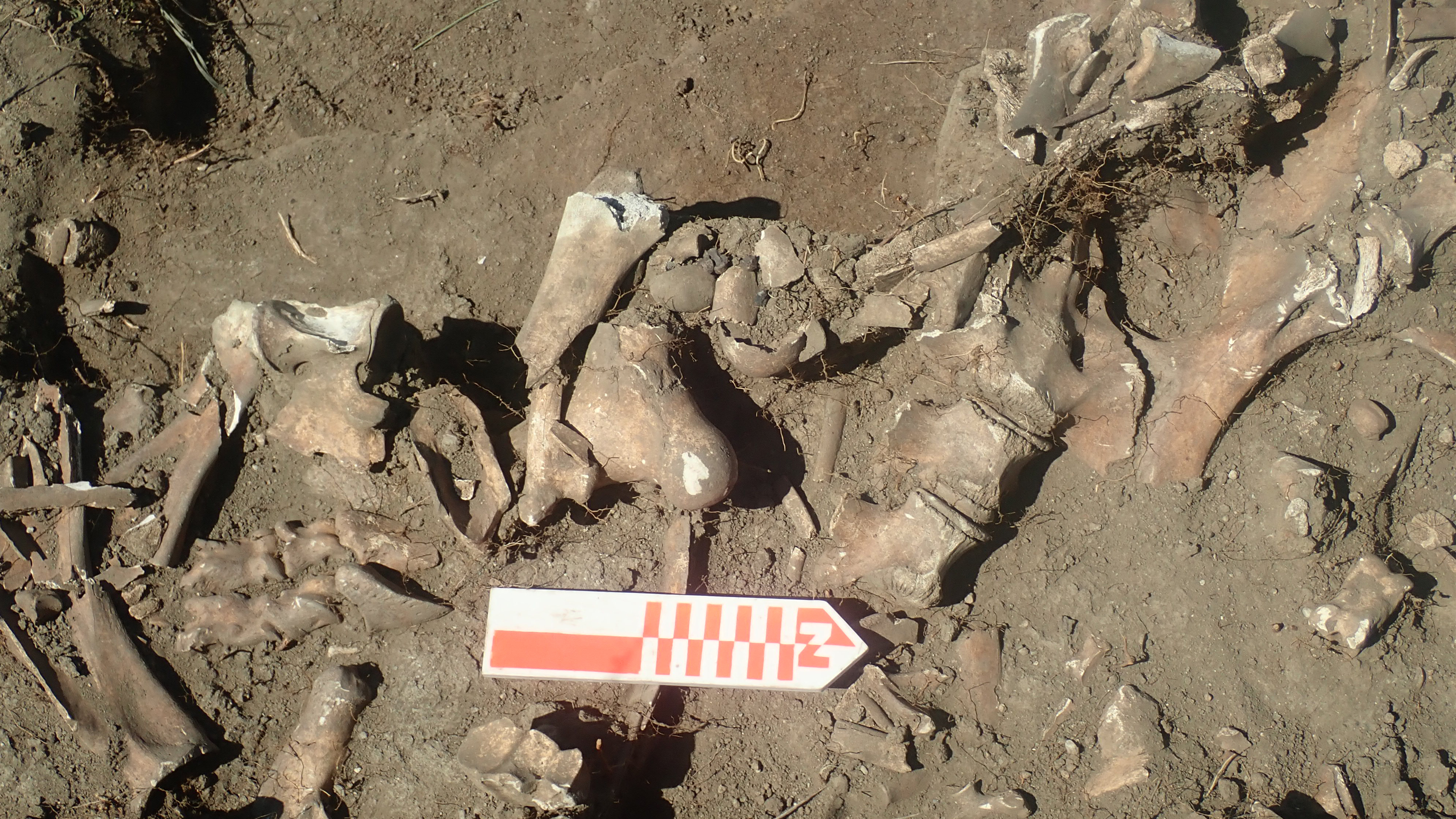 ogists and the land owners have discovered two more kill sites in the area, but they would also like to find the living spot of the people.
ogists and the land owners have discovered two more kill sites in the area, but they would also like to find the living spot of the people.
“Hopefully, it can be protected and won’t be destroyed, or at least evaluated before it is lost to time ,” said Aaron Mayer, staff archaeologist in the Augustana Archaeology Lab and paleoethnobotanist, who has assisted Fosha at the site in 2017. “We’re trying to find things about the site, discoveries that are going to make the site unique and eligible for the national register.”
But, for Mayer, who conducts research projects and surveys for development, the best part of doing fieldwork is getting others involved.
“Being able to work with different people, all age groups, all different backgrounds; being able to work with students; being able to work with people that aren’t always involved with archaeology makes it exciting. Some of the camaraderie and bonding during and after — it’s all really exciting,” Mayer explained.
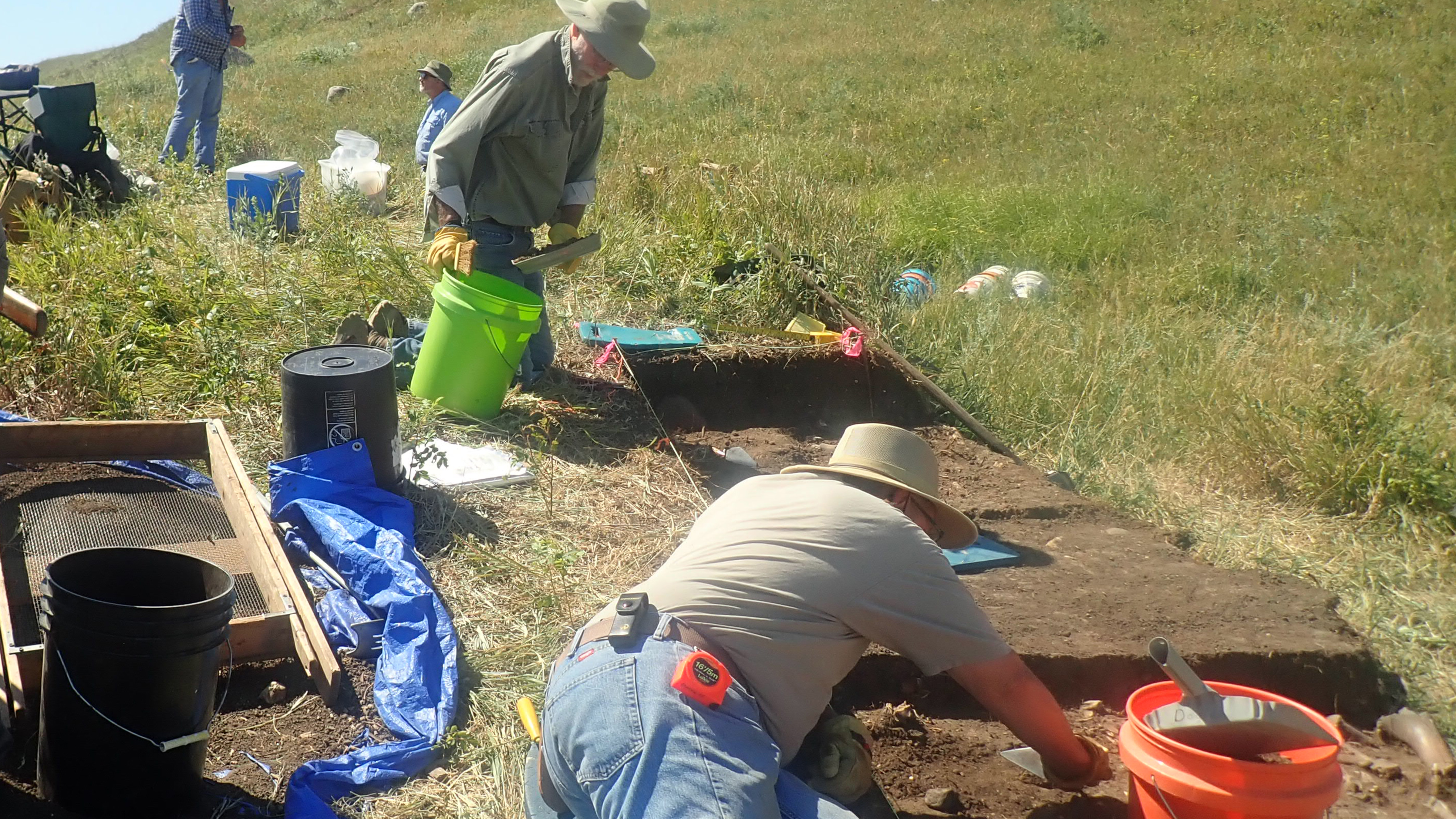 “It’s who you have there that makes a difference (for the students). We’ve got a great team and bring students in not just to actually work. You invest part of yourself in them. You’re trying to teach them at the same time and explain what’s going on and how you can determine this, this and this. It can be a once in a lifetime thing in a number of places as long as you’re with the right people,” Fosha added.
“It’s who you have there that makes a difference (for the students). We’ve got a great team and bring students in not just to actually work. You invest part of yourself in them. You’re trying to teach them at the same time and explain what’s going on and how you can determine this, this and this. It can be a once in a lifetime thing in a number of places as long as you’re with the right people,” Fosha added.
Which brings us back to Johnson, and why she chose Augustana.
“They would teach me something and then let me go do it. And then it was a learning opportunity. I never felt like I was being talked down to. I felt like I was being collaborated with and it was a really good feeling,” said Johnson.
After Augustana, Johnson is considering a graduate program in Scotland. Originally from Alaska, she’s also interested in discovering archaeological findings in the Pacific Northwest. From a journalistic perspective, she said it’s important in the future to be able to relay the information that they’re learning to a broader audience.
“Archaeology abroad is really cool, but I think that American archeology is very underappreciated. I think it’s important for people to know whose land they’re on, what it meant to the people who lived here and for those who live here now to connect it with their relatives,” said Johnson.
As for the site, Fosha and his crew want to keep learning from it.
“There was talk of perhaps going after a National Science Foundation grant. No site is going to last forever. They begin to degrade the moment they are made and that’s one of the reasons we try to visit as many sites as we can,” said Fosha.
For more information on majoring in anthropology at Augustana, visit augie.edu/anthropology.
